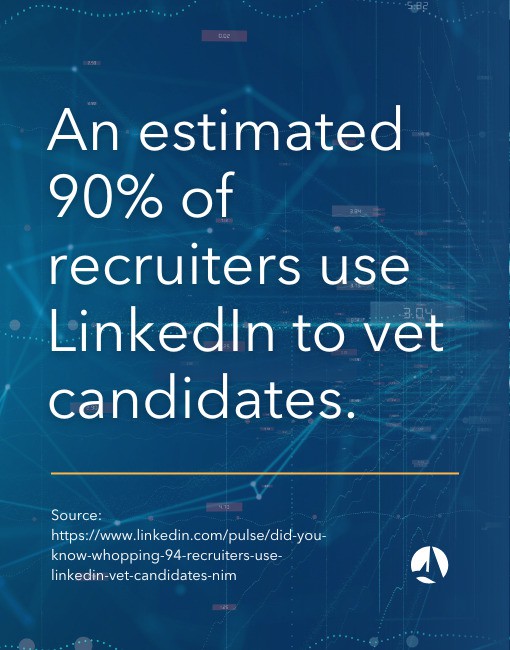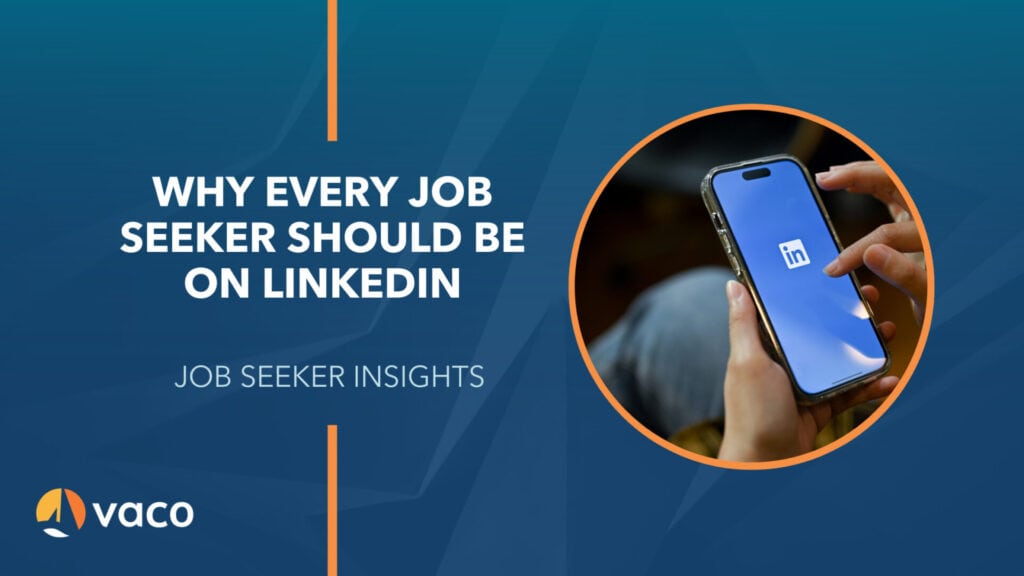LinkedIn is a powerful tool for professional networking, training and development, industry insight, and marketing opportunities. But many users, even seasoned ones, aren’t unlocking the full suite of features and resources the platform provides.
LinkedIn is widely known as the largest social media platform for professionals in the world, with over 190 million users in the U.S. alone. Of those users, however, less than half are considered active (meaning they log in at least once per month). If you only get on LinkedIn a few times per year, you probably aren’t utilizing it to its fullest potential, and you’re almost certainly missing out on some of its most impressive features.
Kim Bottoms, Associate Recruiter in Vaco’s Nashville office, details some of the top reasons you should be active on LinkedIn.
Our author

Kim Bottoms, Associate Recruiter, Vaco in Nashville
Professional development throughout your career
LinkedIn has built out an extensive library of thousands of professional development courses on their LinkedIn Learning platform. Regardless of your industry or level of professional experience, there are courses available to help you advance and expand your skills.
You can easily search courses related to your industry, expertise, skill level, and interests, and you can choose self-paced learning to ensure that each course seamlessly fits into your schedule.
If you’re in between jobs, considering a new role, or don’t have access to training in your current job, LinkedIn Learning is a great way to expand your professional knowledge on your own timeline.
Accelerate your job search
As a job seeker, you can use LinkedIn to research new companies, follow your desired companies’ pages, and stay up-to-date on their job postings and company news. These updates will give you a better understanding of each company’s culture and business initiatives.
You can also curate your LinkedIn settings so you’ll see the most relevant open roles, without being overwhelmed with job postings.

Here are some easy ways to customized your job hunt on LinkedIn:
- Set your career interests so you receive alerts on “Jobs You May Be Interested In”. Include the potential job titles and locations that are most relevant to you. Make sure to designate your preferences for hybrid, remote, or on-site roles so you only receive alerts for jobs that align with your desires.
- Set aside time to go through your alerts each day so you don’t overlook a potentially great opportunity. Applying early may help your chances, but don’t be discouraged if hundreds of people have already applied—not all applicants will have the right experience or qualifications.
- Take advantage of LinkedIn’s Easy Apply option. This functionality allows job seekers to apply to job postings on LinkedIn without leaving the site. Not only can you apply directly through LinkedIn, your profile information—name, location, professional specifics—will auto-populate in the application fields so you don’t have to retype everything over and over. Once you’ve completed the application, just hit “Submit” and it will be securely delivered to the job poster.
- If you’re particularly interested in a role, make sure you follow up with the job poster or recruiter after you submit your application. That additional touch may be what separates you from the rest of the applicant pool. Personalize it, and make it count!
Expand your professional network
Building a professional community—and maintaining relationships—are essential throughout your career. In fact, research shows that between 70% and 80% of jobs are filled through personal connections. LinkedIn can be an essential tool in building and maintaining your professional network, no matter where you are in your career journey.
How do you start making those connections on the LinkedIn platform?
Check out the “My Network” tab on your LinkedIn feed. You’ll see a list of creators, accounts and pages that are popular with users who have a similar industry or job title as you. You’ll also see a list of people you may know; these recommendations are generated based on the user’s similarity to you or their degree of connection to the people already in your network.
“My Network” will also allow you to check in with current and former colleagues and help you discover and connect with new people in your organization. Always send a personal message when you request a connection; it increases the likelihood that your request will be seen and accepted.
Be mindful of the connection tiers on LinkedIn. If a first connection of yours shares a post in your feed, pay attention to the second or third connections who engage with it—they may be great connections for you, too. Making these connections could lead to potential opportunities, give you a new community to engage with, and help expand your presence in your industry circle.
As previously mentioned, it can be beneficial for a job seeker to send a request to connect after applying to a job posting. Many job postings on LinkedIn will provide the name of the user who posted the job, so you can easily view their profile and ask to connect with them.
If you don’t see a job poster’s name on the listing, explore the “People” tab on the company’s page. Look for recruiters, hiring managers, or employees in the talent acquisition department. If you decide to send a connection request, always include a personalized note to make a great first impression.
Read more: Create a captivating LinkedIn profile
The hiring and recruiting experts at Vaco help candidates find their dream jobs at every stage of their careers. Learn more about our expertise or reach out to our talent specialists to see how we can transform your job search.
Our Author
- Kim Bottoms, Associate Recruiter, Vaco in Nashville
